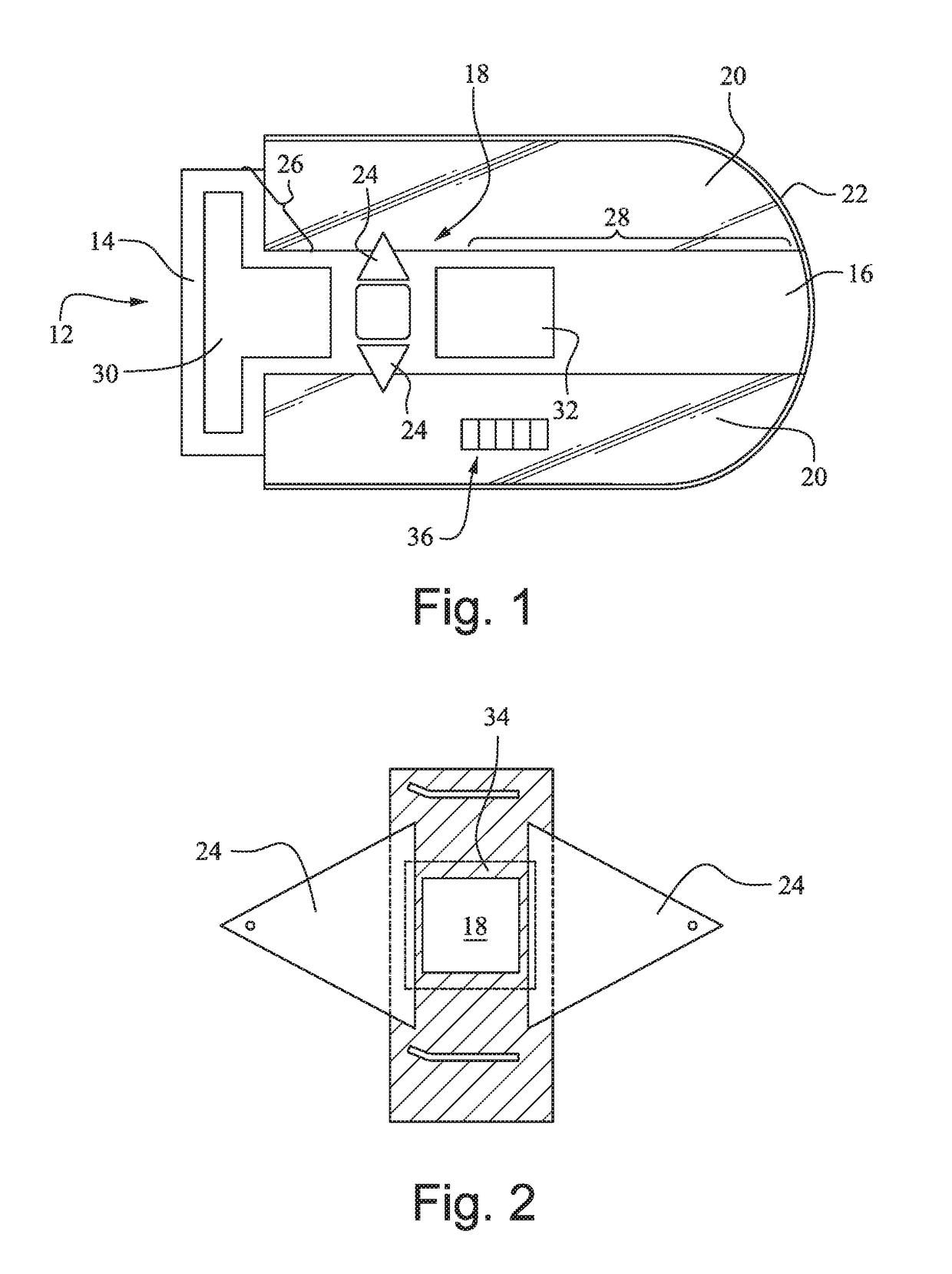Minimally invasive spine surgery drape
a spine surgery and drape technology, applied in the field of surgical drapes, can solve the problems of inability of surgeons to see the image intensifier or the tools on the floor, injury to patients, and more procedures, and achieve the effect of preventing or minimizing the entanglement of the devi
- Summary
- Abstract
- Description
- Claims
- Application Information
AI Technical Summary
Benefits of technology
Problems solved by technology
Method used
Image
Examples
Embodiment Construction
[0018]FIG. 1 is a plan view of the surgical drape according to a preferred embodiment. The drape includes a center section 12 extending longitudinally from a head end 14 to a foot end 16. This center section includes an operating window 18 and at least one surgical fluid collection pocket 24 disposed adjacent the operating window 18. Preferably, the center section 12 is formed of an opaque material.
[0019]A side section 20 is positioned on each longitudinal side of the center section 12 as shown. Preferably, the side sections are at least partially transparent. The center section 12 may be made out of a single sheet of material such as cloth or other appropriate fabric, or cut separately and attached together by known methods. The side sections 20 may be secured to the center section 12 with an adhesive, hook and loop fastener, or other known methods suitable for the described application.
[0020]An elastic band 22 extends through the outermost ends of the side sections 20 and across t...
PUM
 Login to View More
Login to View More Abstract
Description
Claims
Application Information
 Login to View More
Login to View More - R&D
- Intellectual Property
- Life Sciences
- Materials
- Tech Scout
- Unparalleled Data Quality
- Higher Quality Content
- 60% Fewer Hallucinations
Browse by: Latest US Patents, China's latest patents, Technical Efficacy Thesaurus, Application Domain, Technology Topic, Popular Technical Reports.
© 2025 PatSnap. All rights reserved.Legal|Privacy policy|Modern Slavery Act Transparency Statement|Sitemap|About US| Contact US: help@patsnap.com



